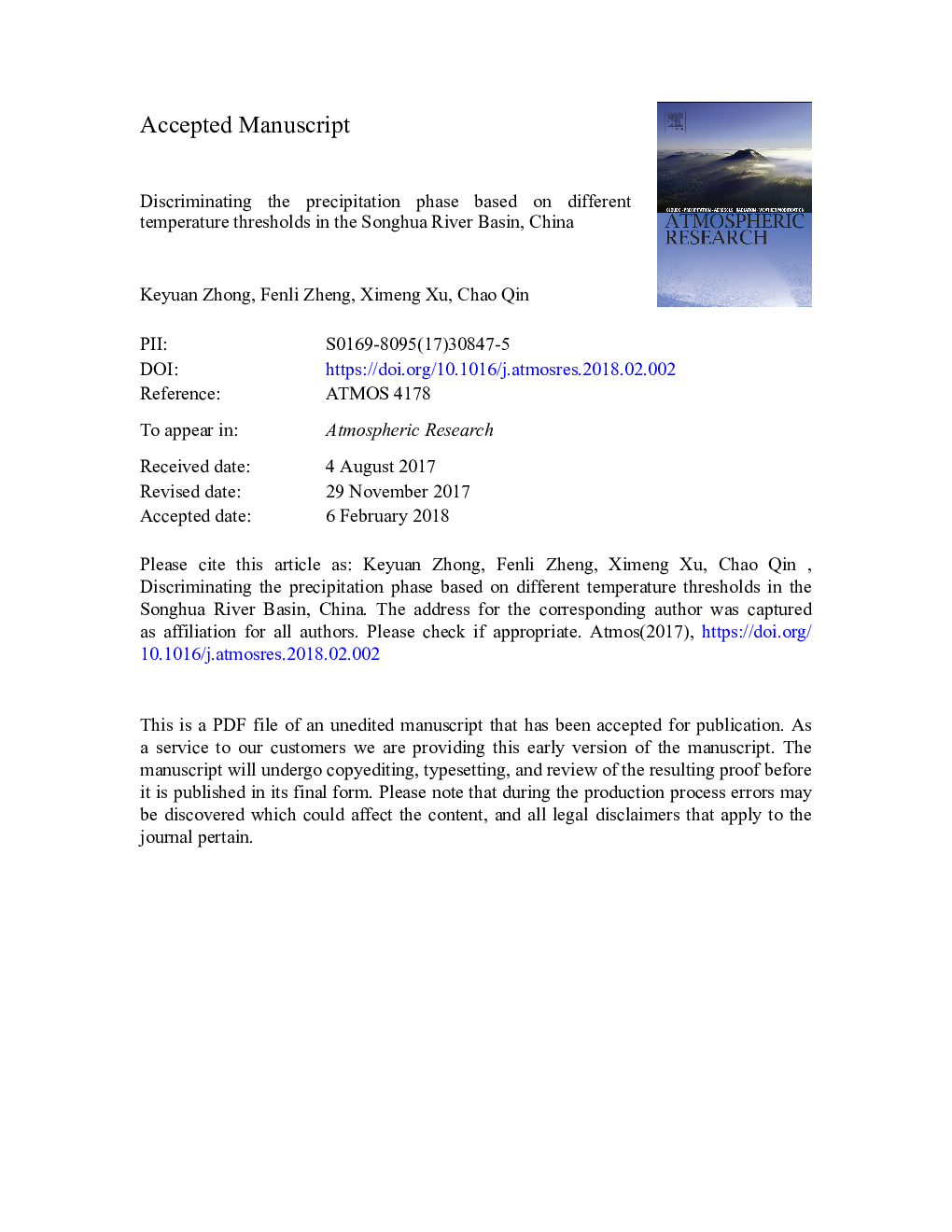| Article ID | Journal | Published Year | Pages | File Type |
|---|---|---|---|---|
| 8864697 | Atmospheric Research | 2018 | 47 Pages |
Abstract
Different precipitation phases (rain, snow or sleet) differ greatly in their hydrological and erosional processes. Therefore, accurate discrimination of the precipitation phase is highly important when researching hydrologic processes and climate change at high latitudes and mountainous regions. The objective of this study was to identify suitable temperature thresholds for discriminating the precipitation phase in the Songhua River Basin (SRB) based on 20-year daily precipitation collected from 60 meteorological stations located in and around the basin. Two methods, the air temperature method (AT method) and the wet bulb temperature method (WBT method), were used to discriminate the precipitation phase. Thirteen temperature thresholds were used to discriminate snowfall in the SRB. These thresholds included air temperatures from 0 to 5.5â¯Â°C at intervals of 0.5â¯Â°C and the wet bulb temperature (WBT). Three evaluation indices, the error percentage of discriminated snowfall days (Ep), the relative error of discriminated snowfall (Re) and the determination coefficient (R2), were applied to assess the discrimination accuracy. The results showed that 2.5â¯Â°C was the optimum threshold temperature for discriminating snowfall at the scale of the entire basin. Due to differences in the landscape conditions at the different stations, the optimum threshold varied by station. The optimal threshold ranged 1.5-4.0â¯Â°C, and 19 stations, 17 stations and 18 stations had optimal thresholds of 2.5â¯Â°C, 3.0â¯Â°C, and 3.5â¯Â°C respectively, occupying 90% of all stations. Compared with using a single suitable temperature threshold to discriminate snowfall throughout the basin, it was more accurate to use the optimum threshold at each station to estimate snowfall in the basin. In addition, snowfall was underestimated when the temperature threshold was the WBT and when the temperature threshold was below 2.5â¯Â°C, whereas snowfall was overestimated when the temperature threshold exceeded 4.0â¯Â°C at most stations. The results of this study provide information for climate change research and hydrological process simulations in the SRB, as well as provide reference information for discriminating precipitation phase in other regions.
Related Topics
Physical Sciences and Engineering
Earth and Planetary Sciences
Atmospheric Science
Authors
Keyuan Zhong, Fenli Zheng, Ximeng Xu, Chao Qin,
